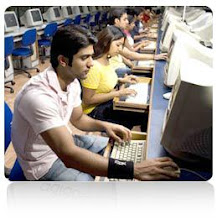information on India - Politics of India
India is the largest democracy in the world. India has the biggest number of people with franchise rights and the largest number of political parties, which take part in election campaign. In the 1996 national elections, almost 600 million people voted and an average of 26 candidates competed for each of the 543 territorial constituency seats.
Elections are held at different levels. The two major election levels are at national level, after which the national government is established and at state level after which the state government is established. Elections are also held for city, town and village councils.
There are different political issues in Indian politics. Some are national level and some regional level. Some communities just demand more economical and social rights for their communities. While others demand more autonomy for their cultures within the Indian states. Some demanded autonomous states within the Indian Union, while the others demanded to be independent from India. With all its problems India survives as a single state with democratic character. But a number of political problems still exist and remain unsolved in India.Political administration of India
India is a democracy. Before its independence its future leaders chose the liberal democratic system as the administration system of India. On 26/01/1950, India declared itself as Republic. On this day the Constitution of India came into force. Today India is a federation of 28 states and 7 union territories and formally this federation is known as a Union.
Nominally the head of the country is the President in whom all executive powers are vested, but the real administrator of the country is the Prime Minister. After the national elections are held the President calls the most suitable candidate to form a government, known as the central government. Normally this candidate is the head of the largest party in the parliament. In case the government resigns because of any reason, the President can call the other candidate to form the government. The President can also declare, according to government advice, on new elections and if necessary an emergency state. The President has the right to be updated about crucial government matters and other rights like giving amnesty to prisoners etc. According to the Constitution, elections are to be held once in every five years, unless the parliament dissolves earlier or on the other hand, emergency is declared and in such a case parliament can continue another year.
The Indian Parliament consists of two houses. The Lower House called the Lok Sabha and the Upper House called the Rajya Sabha. In the national elections candidates are chosen for the Lower House. The candidates are elected in territorial constituencies. There are 543 territorial constituencies. Two members from the Anglo-Indian community are nominated to the Lower House by the President. The law, which obliges Government office to reserve 15% from the Scheduled Castes and 7% from the Scheduled Tribes, also exists in the Parliament. At least 22% of the Indian Parliament members belong to these two communities (see Caste system in modern India). In the past few years there is an attempt to oblige a law to allow about 33% women as Parliament members.
The Upper House, Rajya Sabha, consists of up to 250 members. Of these members 230 are elected by state legislatures and about 15 are nominated by the President. Unlike the Lower House, the Upper House cannot be dissolved, but one third of its members resign every two years.
Most of the parliamentary activities, passing laws, no-confidence votes, budget bills, take place in the Lower House. The Upper House together with the Lower House amends the Constitution. These two Houses together with the state legislatures also elect the President.
The states have their own legislatures. Some states have two Houses and some only one House. The Lower House where most of the legislature activities happen is called the Vidhan Sabha. The state elections are held every five years unless the state government is dissolved earlier. In these elections members for the Lower House are elected.
Head of a state is called Chief Minister, who is member of the Lower House. Constitutionally the figurehead of the state is the Governor, who is appointed by the President according to the advice of the national government. After the state elections the governor calls for the suitable candidate to form the government. In general the governor has more legislative rights at state level than the President has at national level. The governor can call on early elections in the state, or fire the government if he thinks that the government has failed or is unstable.
In the federal relations between the state and central government, the central government has more authority on state matters than the state government. For example the central government has the right to redistribute the state borders without consulting the state governments on this matter. If the political conditions in any state are not stable, the national government can call on the President to declare President's rule in that specific state. And so the government in that state is dissolved, which means an emergency rule is declared and sometimes if necessary the army is put to work in that state.
Even though the Constitution determinates the rights of the different authorities in the administration process, there can be other pressures like strong lobbies or strong political parties, which, sometimes determinate the real administration process. Sometimes the authority implemented by the President is questioned by the government or by political parties as deviation from his constitutional rights as the nominal head of the Union.

No comments:
Post a Comment